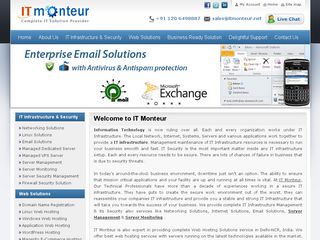Do you know what ports in your server are open?
Do you know which services running in your server are not needed and can be safely turned off?
Do you know that removing unused services could make your server more secure and free up resources?
Are your servers patched up to the latest version of released software?
Do you have the latest antivirus definitions?
Have all detected viruses and malware have been cleaned out of your server?
Please keep in mind Server Management monitoring and its security is a way of life and a life style. It is a set of procedures and policies that must be malleable, and yet followed consistently.
There is no such thing as a one time hardening just like there is no such thing as a one time anti-virus install. As new threats or attacks arise, it’s important that you never allow yourself to feel too safe or too secure, always check things out, always be open to learning new security philosophies, and always be on the look out for suspicious activity on your machines.
Windows Server Security Management
Install patches as necessary; do on a regular basis
Disable telnet
Do an initial hardening of the operating system
Only allow certain IP’s access to Remote Desk Top / Windows Terminal Server
Disable storing insecure version of passwords
Recommended Registry key configuration to thwart DoS attacks
Use Windows Group Policies to stop known Worms and Trojans from running
Remove unnecessary applications
Install a firewall
Change your passwords on a regular basis
Daily routine
Linux Server Security Management
- Install patches as necessary; do on a regular basis
- Disable telnet
- Do an initial hardening of the operating system
- Remove regular user and world access from c compilers
- Secure host.conf
- Install chkrootkit, and set up in cron
- Install root kit hunter, and set up in cron
- Install rootcheck, and set up in cron
- Install logwatch
- Disable direct root login
- Only allow certain IP’s access to SSH
- Install a firewall
- Recreate the /tmp directory on its own partition
- Secure shared memory
- Remove unnecessary packages
- Set PHP up for safe mode on
- Turn off server signatures
- If you are going to grant shell access in a shared environment
- What if I have to regenerate the SSH Key?
- Change your passwords on a regular basis
- Daily routine
Managing servers can be a daunting task for a Windows or Linux Admin. If you know the answers to all these questions, you are probably a savvy server administrator. Even most savvy administrators sometimes fall behind in these ongoing tasks due to lack of time. Our full service package is for a small business owner or a service provider such as a web designer, web host, or game server operator, who either does not want to become an expert at securing and updating servers, or does not have time to do all the routine tasks. With this complete administration package, we free you up to do what you do best…run your business. With a full service package for each server, you can leave the hassles of server administration to us. Each of our engineers has more than a dacade of experience. With this highly skilled technical staff, we provide professional yet affordable server administration services.
Please contact us for your server security management requirements. we provide Windows Server Security, Linux Server Security management services. please contact us for Server Management, Monitoring & its security. We will be glad to assist you in meeting all your IT Service requirements.






